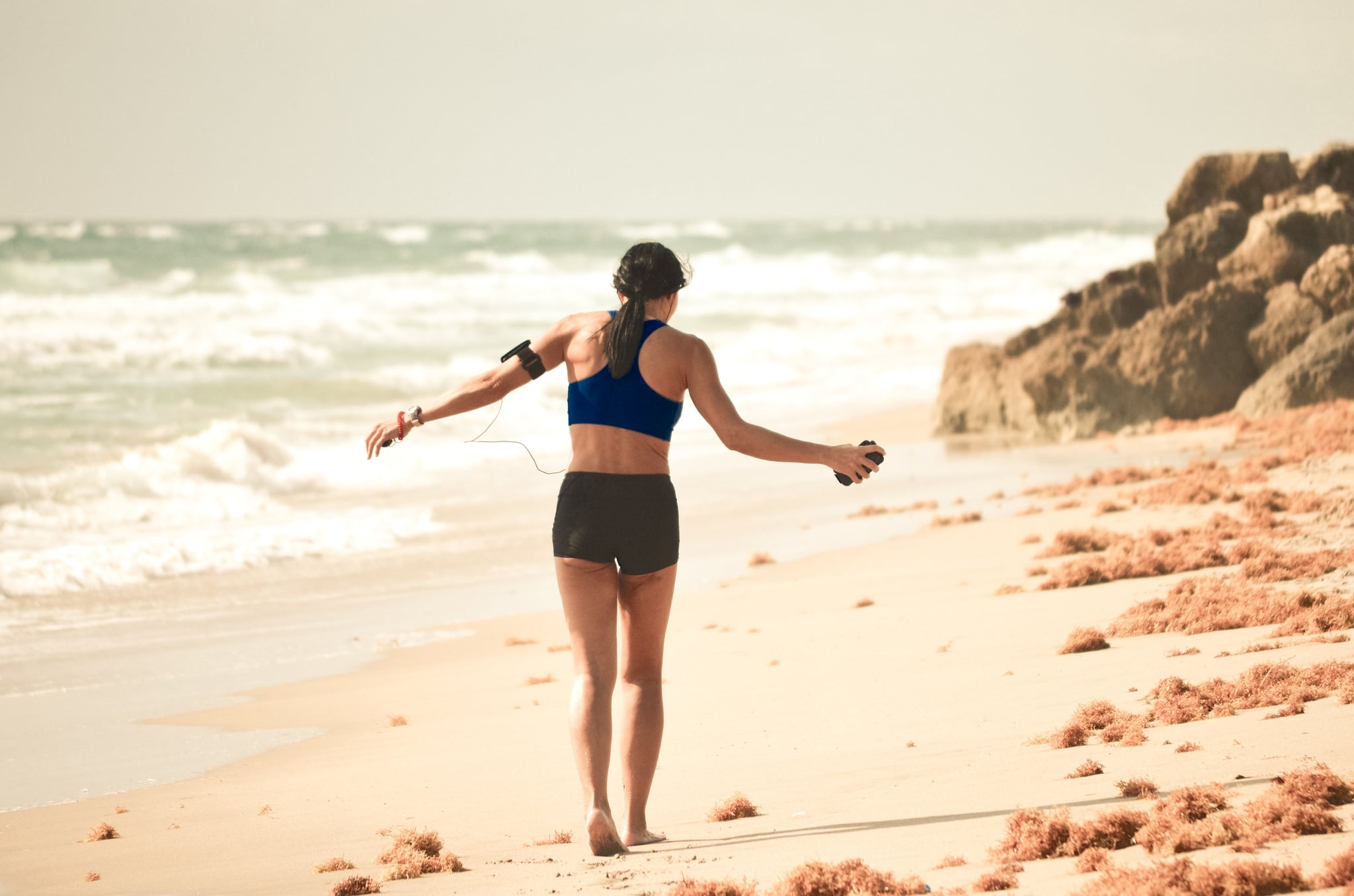Is It Bad to Run on Sand?
Are You Hurting Your Body by Running on Sand? A Doctor Weighs In

Whether you want to squeeze in a run on your beach holiday or the heat is forcing you to move your workouts outdoors, jogging along the water is a great way to change up your scenery. And if you've ever done any activity on sand, you know how much harder it is to navigate on that terrain, which makes the beach the perfect gym. But we wanted to find out if running on sand has any negative impact on our body, especially as more runners head to the shore. We spoke with Natasha Bhuyan, MD, and Navya Mysore, MDCM and CCFP of One Medical, who settled the debate once and for all.
Is running on sand bad for your knees and ankles?
"Running on sand requires more energy and the use of different muscles than running on a hard surface, but it's not bad for your knee or ankles," Dr. Bhuyan told POPSUGAR. "The issue with running on sand is when the heel strikes the sand, it doesn't propel you forward. Thus, other muscles — like [those] in your calves — have to work to compensate."
However, there are risks without proper form as your joints undergo different stresses on a softer surface. Dr. Mysore shared that knee sprains or tendonitis of the knee are most common, in addition to Achilles tendonitis. To prevent injury, "it's important to check your form, warm up before and stretch after, and try not to increase your speed and duration too quickly when running on a surface you are not accustomed to," she told us.
Is it better to run barefoot or with running shoes?
In theory, running barefoot on sand should be better for your joints since it allows the balls of your feet to land first rather than your heels. The increased surface area is supposed to ease the impact. But Dr. Mysore recommends keeping your shoes on to absorb shock and provide you with support and stability. On the other hand, Dr. Bhuyan said that some of her patients find running barefoot to be better on their knees, although it may stress their calves or ankle tendons. Your personal history of running injuries also plays a factor. But overall, there isn't enough available research to definitively rank one method better than the other, according to Dr. Bhuyan.
Considering that walking or running on sand burns 30 percent more calories than you normally would on a hard surface, we say go for it. Pro tip: alternate between wet, packed sand and loose sand, starting with the former.






